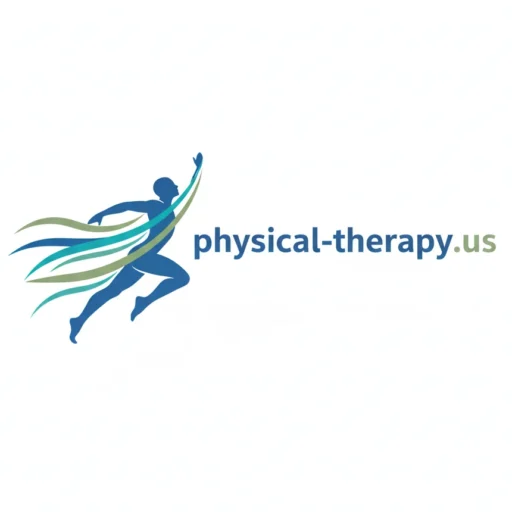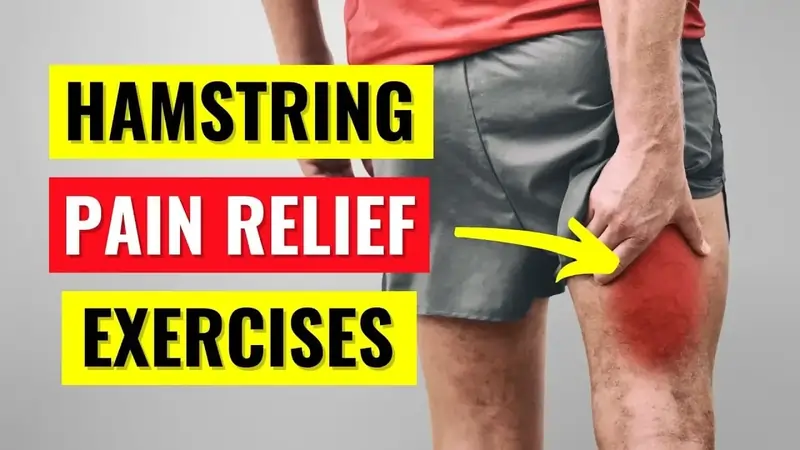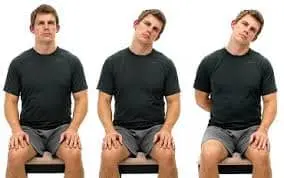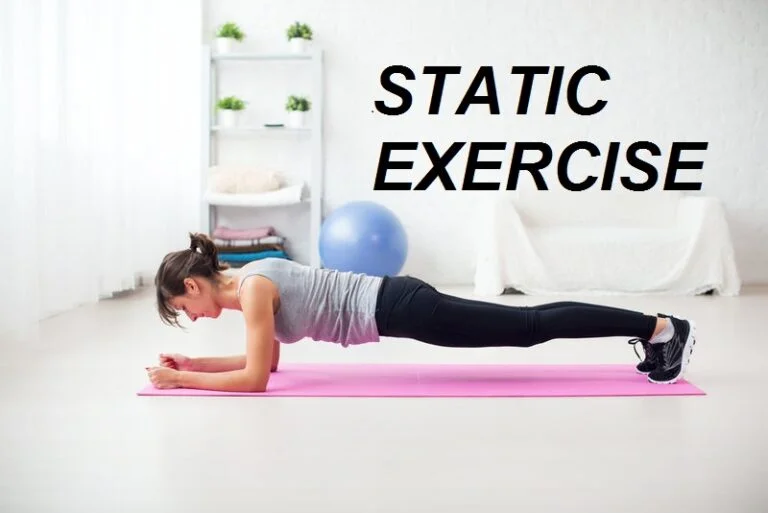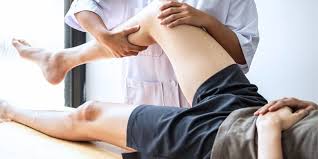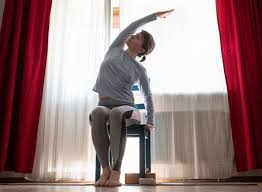17 Best Exercises For Hamstring Muscle Pain
Introduction:
Hamstring muscle pain is often caused by strain, overuse, or poor flexibility. Physical Therapy exercises can help reduce pain, promote healing, and prevent future injuries. Gentle stretching and strengthening exercises are essential for restoring muscle balance and improving function.
Hamstrings extend from the hip, along with the rotation of the hip joint, this muscle group also helps in the bending of the knee joint.
A pull, partial tear, or full tear is the most common way that hamstring muscle injuries manifest. Although movement in sports is frequently associated with hamstring injuries, insufficient flexibility, excessive training, and previous hamstring injuries can also cause them.
In the process of recovery, Exercises For Hamstring Muscle Pain are essential. Exercise encourages more blood flow to the injured area, which speeds up the healing process. Strength, muscle flexibility and joint stability, balance, and endurance are all improved by exercise.
An added benefit of exercising is that it releases endorphins, which improve your mood! Additionally, it encourages greater sleep, which helps in healing.
Causes of Hamstring Muscle Pain:
Poor Warm-Up or Cool-Down
- Exercise danger increases if you don’t warm up properly before beginning.
Hamstring sprain or rupture
- Overstretching
- Sudden stops
Referred Hip or Lower Back Pain
- Hamstring pain can be caused by conditions such as hip joint problems or lumbar disc herniation.
Use of Muscles Too Much
- Chronic stress from sports, cycling, or jogging causes pain and swelling.
Insufficient Flexibility or Unbalanced Muscles
- Pain and strain can be caused by tight hamstrings or weaker supporting muscles.
Tendinopathy or Tendonitis
- Hamstring tendon inflammation or degeneration, frequently in the area of the knee (distal) or buttock (proximal)
Injury to the Nerves or Sciatica
- Pain radiating down the leg might be mistaken for sciatic nerve inflammation.
Delayed Onset Muscle Soreness (DOMS)
- Happens 24–72 hours following intense or new physical activity.
- Soreness instead of acute pain
Signs and symptoms:
Localized Pain
- Tightness, trembling, dull aching, or acute pain
- It might happen gradually or suddenly.
Leg Weakness
- Having trouble kicking, running, walking, or standing
- The leg could feel like it’s falling out.
Bruising or Swelling
- Swelling, especially in situations of muscle tears, can be moderate or severe.
- Bruising can develop on the rear of the thigh or even spread to the knee.
Having Trouble Straightening the Leg
- Attempting to completely extend the knee causes further pain.
- Frequently, as a result of partial tears or tight muscles.
Spasms or cramping
- Overuse or dehydration can cause the hamstring muscles to suddenly become stiff and involuntary.
A sound that clicks or pops
- When damage occurs, it can happen.
- Frequently, there is a sudden, severe pain after.
Pain While Engaging in Particular Activities
- Lunging, bending over, running, and climbing stairs can all cause or increase symptoms.
Tenderness to the Touch
- Pain when the hamstring muscle is pressed
- Frequently seen in tendinitis, tears, and strains.
Tightness or stiffness in the muscles
- Decreased range of motion and soreness while trying to stretch the leg or bend forward
Benefits of exercise:
If done properly, exercising when experiencing hamstring muscle pain may greatly speed up recovery and help you avoid getting hurt again.
Encourages the recovery process and Healing
- Removal of waste products like lactic acid
- Speeds up tissue healing and reduces recovery time.
Improves Mental Health and Self-confidence
- Exercise reduces injury-related anxiety.
- Regains faith in the leg’s ability to perform
- Reduces the anxiety associated with movement, which might delay healing.
Lessens Stiffness and Pain
- Helps gradually extend tense muscle fibers.
- Lessens muscular rigidity, particularly following an injury or an extended period of inactivity.
- Makes endorphins, the body’s natural painkillers, available.
Avoids Muscle Atrophy
- Tone and muscle mass are maintained with little resistance exercise.
- Prevents the hamstring and related muscles from becoming weaker.
Increases Flexibility
- Restore your range of motion to normal.
- Reduce the likelihood of the following strains.
- Encourage the knee and hip joints to move more freely.
Improves Movement Mechanics and Posture
- When walking, jogging, or lifting, poor posture or biomechanics can cause hamstring strain.
- Corrective exercises improve leg coordination and core activation.
Increases Stability and Strength
- Increase the strength and endurance of your hamstrings.
- Improve your quadriceps and hamstrings’ balance.
- To lessen the strain on your hamstrings, strengthen your core and glutes.
Avoids Re-injury
- Strengthening muscles with conditioning
- Improves movement patterns and neuromuscular control.
- Helps in gradually increasing load tolerance and correct movement.
When beginning an exercise regimen, be sure to take the following precautions:
To protect your health and maximize the advantages of any exercise program, it’s important to consider a few safety measures before starting. Ask your physician or physical therapist what exercises would be best for your specific problem.
While some pain while exercising is normal, it might indicate that you’re pushing yourself too hard if it gets worse. Work your way up from low-impact workouts to more difficult ones once you can handle more pain.
If you are unclear about how to follow a fitness regimen, get advice from an acknowledged specialist. Before beginning any exercise, warm up your muscles and joints to ensure they are ready for the task.
Exercises For Hamstring Muscle Pain:
The following exercises are part of this rehabilitation program for hamstring injury. They include strengthening, stretching, and functional exercises that should be done in addition to therapeutic methods. They are also ideal for strengthening the hamstring muscles to improve performance and reduce the chance of injury.
These exercises may initially increase the level of pain. Don’t panic; just start with fewer sessions the next time and work your way up.
Kettlebell swing
- Place your feet shoulder-width apart to start.
- After that, grasp a kettlebell.
- Next, move your hips back and flex your knees slightly to place the kettlebell between your legs.
- Lift your body into a standing position by exhaling, contracting your glutes, and pushing your hips forward.
- As you hold the kettlebell, let your arms extend as far as they will easily.
- Take a deep breath.
- After that, release the kettlebell between your legs by gently bending your knees and pressing your hips back.
- Then return to your neutral position.
- Then relax.
- Repeat these exercises 5 to 10 times.
 kettlebell swing
kettlebell swing
Standing hamstring stretch
- You will require a chai to support yourself.
- Place your right leg on the chair with the toes facing up and the heel pressed into the seat.
- Your left leg stays grounded.
- Tip your body forward while making sure your back is flat.
- Hold this position for a few seconds.
- Then return to your neutral position.
- Then relax.
- Repeat these exercises 5 to 10 times.
 standing-hamstring-stretch
standing-hamstring-stretch
Seated hamstring stretch
- Take a seat in a chair.
- Then put one leg out in front of you and plant your heel on the floor.
- Lower your chest towards the floor while hanging at your hips.
- Hold this position for a few seconds.
- Then return to your neutral position.
- Then relax.
- Repeat these exercises 5 to 10 times.
 Seated hamstring stretch
Seated hamstring stretch
Lying hamstring stretch
- Start by lying down on the floor.
- Pull your right knee up to your chest slowly.
- You can use a rope or yoga strap to improve your stretch, but don’t pull too hard.
- The knee should stay slightly bent as the leg is extended.
- Hold this position for a few seconds.
- Then return to your neutral position.
- Then relax.
- Repeat these exercises 5 to 10 times.
 Supine hamstring stretch
Supine hamstring stretch
Split squat
- Be on the ground and stand in the beginning.
- Make a 90-degree angle with both legs as you lower yourself to one knee.
- Slightly bend forward.
- You should place your feet parallel to one another.
- Look straight ahead to maintain a neutral neck posture.
- To stand up, activate your back glute.
- Return your knee to the floor without putting any pressure on it.
- Rather, maintain your balance and stay just over the ground before jumping back to your feet.
- Then return to your neutral position.
- Then relax.
- Repeat these exercises 5 to 10 times.
 split squat
split squat
Squat
- Start by standing comfortably on the ground.
- Utilizing your core muscles, shift your weight back into your heels by pushing your hips back.
- Drop into a squat until your body starts to bend forward or round.
- Next, compress your glutes.
- Hold this position for a few seconds.
- It should be your form that tells you how deep you are.
- To stand back up to your starting posture, press through your heels while maintaining a strong core and an expanded chest.
- Then return to your neutral position.
- Then relax.
- Repeat these exercises 5 to 10 times.
 wide-stance-Squats
wide-stance-Squats
Straight Leg Raises
- With your legs comfortably spread out on the floor, lie on your back.
- Next, bend your knees.
- Contracting your quadriceps will stabilise the muscles in your straight leg.
- Raise the straight leg a few inches off the ground while taking a deep breath.
- Hold this position for a few seconds.
- As you slowly release your breath, lower your leg to the ground.
- Then return to your neutral position.
- Then relax.
- Repeat these exercises 5 to 10 times.
 Straight-leg-raise
Straight-leg-raise
Glute bridge
- On the floor, begin in the supine posture.
- Next, bend your knees.
- Put pressure on your hips and down through your feet.
- Hold this position for a few seconds.
- Keep them from going over your toes.
- In a controlled motion, let your hips drop back to the floor.
- Then return to your neutral position.
- Then relax.
- Repeat these exercises 5 to 10 times.
 Hip bridge exercise
Hip bridge exercise
Single leg deadlift
- Stand with your hands by your sides and your thumbs pointing outward.
- Bend forward from the hip while keeping the planted leg slightly bent.
- Keep your head in a neutral posture and bend to a 90-degree angle.
- Your hamstring muscles are feeling stretched.
- Hold this position for a few seconds.
- Then return to your neutral position.
- Then relax.
- Repeat these exercises 5 to 10 times.
 single-one-leg-deadlift
single-one-leg-deadlift
Walking lunges
- Maintain a straight posture and place your feet shoulder-width apart.
- With your right leg, take a step forward, shifting the weight to your heel.
- Make sure your right knee is parallel to the floor when you lower yourself into a lunge.
- Keep pushing your left foot forward while keeping your right leg stable.
- When you are in a lunge position, maintain your left leg parallel to the floor.
- Repeat this action while “walking” forward, alternating legs as you lunge.
- Then return to your neutral position.
- Then relax.
- Repeat these exercises 5 to 10 times.
 Walking-lunges
Walking-lunges
Standing Hip Extension
- Begin by standing comfortably on the ground.
- Grab a table or other sturdy surface with your hands.
- When extending one leg backward, keep your knee properly straight.
- Maintain this posture while paying attention to your butt muscles.
- Then return to your neutral position.
- Then relax.
- Repeat these exercises 5 to 10 times.
 Hip Extension
Hip Extension
Single-leg balance
- Hold yourself up straight.
- Keep your arms by your sides.
- You can elevate your foot outside of yourself by flexing one leg.
- Hold this position for a few seconds.
- Drop the elevated foot.
- Then return to your neutral position.
- Then relax.
- Repeat these exercises 5 to 10 times.
- Change sides and do it again.
 Single-leg balance
Single-leg balance
Hamstring swings
- Place your feet hip-width apart to begin.
- The range of motion may be gradually increased by moving one leg forward and backward.
- The intensity should be increased gradually, starting with mild swings to avoid stress or loss of balance.
- Along with keeping your balance, you should avoid jerking or gaining too much speed.
- Then return to your neutral position.
- Then relax.
- Repeat these exercises 5 to 10 times.
 hamstring swings
hamstring swings
Prone hamstring curl
- Place a band against your ankle while lying prone on a mat.
- To stabilise your spine and straighten your core, gently contract your abdominal muscles.
- Throughout the exercise, maintain your toes pointed in the direction of your shinbone.
- Lift your hips off the mat or arch your low back by exhaling and curling (bending) your knee, pushing your heel towards your buttock without shifting your thigh.
- Keep bending your knee until your heels get close to your buttocks, contact them, or you feel as comfortable as you can.
- You’ve reached the limit of your joint’s range of motion when you start to feel your hips or lower back moving.
- Take a breath and slowly move your leg back to where it was before.
- Then return to your neutral position.
- Then relax.
- Repeat these exercises 5 to 10 times.
 prone-hamstring-curl
prone-hamstring-curl
Donkey kick
- Place yourself on the ground in a tabletop posture to begin.
- Extend one leg back and towards the ceiling while maintaining a bent knee.
- Your foot or shoe’s bottom should be looking” up at the ceiling.
- For a few seconds, maintain this posture while concentrating on contracting your gluteal muscles.
- Additionally, you might feel your hip and core muscles contracting.
- Then return to your neutral position.
- Then relax.
- Repeat these exercises 5 to 10 times.
 Donkey-kick-exercise
Donkey-kick-exercise
Single knee to chest
- Start by resting on your back on a cushioned surface, such as a yoga mat, blanket, or bed.
- Maintain a relaxed posture for your head and shoulders while performing this stretch.
- Bend your left knee carefully in toward your chest with both hands behind it.
- Hold this position for a few seconds.
- Then return to your neutral position.
- Then relax.
- Repeat these exercises 5 to 10 times.
- On the opposite leg repeat the stretch.
 One-Knee-to-Chest
One-Knee-to-Chest
Lying Crossover Stretch
- Begin by laying down on the floor and relaxing.
- Your left foot should be flat on the ground while you bend your left leg.
- Spread your arms wide till the letter “T” or a cross is formed by your body.
- Lower your left leg over your right and tilt your head to the left.
- Hold this position for a few seconds.
- Then return to your neutral position.
- Then relax.
- Repeat these exercises 5 to 10 times.
 Crossover-stretch
Crossover-stretch
What safety precautions should be followed when working out?
Safety is essential when conducting hamstring muscle pain exercises to prevent additional injuries and promote a speedy recovery.
Get expert advice first.
- See a physical therapist, particularly following minor or serious injuries.
- They will keep an eye on your form and assist in creating a customized rehabilitation strategy.
Get Well Warmed Up
- Walk or ride a stationary bike for five to ten minutes to improve blood flow.
- Dynamic stretches should come next to get muscles ready for activity.
Pay Attention to Your Body
- A little pain is ok.
- Stop if the pain is sharp, stabbing, or getting worse.
- After the activity, pain shouldn’t last for more than 24 to 48 hours.
Use the Correct Form
- Pay attention to thoughtful, gradual motions.
- Don’t sacrifice form to get more repetitions or stretch.
- If necessary, use mirrors, movies, or advice.
Include Recovery Days
- Don’t train on a healing hamstring every day.
- Utilize sleep, rest, and water, and occasionally apply heat or ice to help in healing.
Make progress gradually.
- Start with easy exercises and work your way up depending on your strength and level of pain.
- A typical cause of re-injury is doing too much too soon.
Put on safety equipment if recommended.
- Athletic tape, compression sleeves, or bandages can lessen strain when exercising.
- Use only as prescribed by your doctor or physical therapist.
When did you stop exercising?
Sudden or Sharp Pain
- A muscle tear or re-injury may be indicated by a stabbing or tearing feeling experienced during a stretch or movement.
Loss of Control or Strength
- Unexpected hamstring weakness, shaking, or inability to contract might be signs of tiredness or nerve damage.
Pain, numbness, or tingling that radiates
- Particularly if pain runs down the leg, it might indicate sciatic nerve involvement rather than merely a muscle problem.
Pain That Increases With Time
- Stop if the pain gets worse with each repetition or set, since the muscle isn’t able to handle the strain.
Heat, Swelling, or Bruising
- This might indicate that you’re applying too much force or damaging the healing tissue again.
When you have hamstring muscle pain, which workouts should you avoid?
Certain exercises may worsen hamstring muscle soreness, slow the healing process, or even result in re-injury.
Intense or High-Intensity Motions
Running
Jumping exercises (bounding, box jumps)
Jump squats and burpees
- The hamstrings receive their maximum load and stretch from these activities.
- Pressure can cause healing muscle fibers to rupture again.
Early Stage High-Resistance Lower Body Machines
Leg press
Leg extension machines
Prone or seated hamstring curl machines
- The hamstrings may be overworked by these activities.
- When the hip and knee angles are not proper, the damaged region may be compressed or strained.
Performing Heavy Lifting Using the Posterior Chain
Deadlifts (traditional, Romanian, and stiff-leg)
Kettlebell swings
Hamstring curls with a lot of weight
- During the early to mid phases of recovery, these workouts put the hamstrings under eccentric (lengthening) stress, which is dangerous.
- May cause little soft tissue rupture or strains.
Aggressive or Deep Stretching
Toe-touching stretches
Forward folds
Straight-leg hamstring stretches
- Damaged fibers may be pulled on by overstretching.
- May worsen pain and postpone tissue healing.
Suggestions for avoiding hamstring injury:
When working out, always warm up and cool down.
- Before playing sports or working out, warming up might help you avoid injuries by increasing blood flow to your muscles.
- Additionally, warming up raises blood temperature, which speeds up the delivery of oxygen to your muscles and increases endurance.
- A hamstring injury, as well as other medical conditions, can be avoided by both of these events.
- You should spend five to ten minutes warming up with a mild to moderate endurance exercise.
Remain hydrated.
- It may also help prevent hamstring strains, even though staying properly hydrated is good for many body systems.
- Muscle cramping can happen when a person is dehydrated.
- Actual tears in some muscle fibres may result from an especially severe muscle cramp.
- It’s crucial to consume enough water each day for this and numerous other reasons.
Increase your level of flexibility.
- Stretching to improve hamstring flexibility is a very good method of preventing hamstring strains.
- The hamstring will extend with repeated stretching, giving you increased range of motion.
- Increased flexibility lessens the chance that the muscle may be injured during a difficult positioning movement since it allows the muscle to stretch further to increase the joint’s range of motion.
Strengthen your hamstring muscles.
- Strengthening the hamstring muscles is an excellent strategy to prevent damage to your hamstrings.
- Since the quadriceps are not connected to the hamstrings and cannot provide much protection, many people concentrate on developing muscle in these areas.
- A person may be at risk for a hamstring injury if there is a significant strength disparity between their quadriceps and hamstrings.
- The exercises suggested above can be used to target the hamstring muscles.
Try to maintain control over your weight.
- Weight and motion together are frequently the cause of hamstring problems.
- Therefore, a heavier person will contribute more weight to the force, increasing the likelihood of hamstring injury.
- You should try to keep your body weight within a healthy range to help avoid hamstring strains.
- One easy way to find out your perfect body weight is to calculate your body mass index, or BMI.
Summary:
People use their hamstrings in daily motions; therefore, it’s essential to maintain their strength and flexibility. You will receive a comprehensive treatment plan that includes manual therapy, therapeutic exercise, therapeutic activity, and modalities if you attend physical therapy for hamstring muscle pain.
Hamstring exercises are a component of a comprehensive training program. These workouts often aim to strengthen the hamstrings. The stretches shouldn’t cause any kind of pain. People can prevent tears and strain their muscles by stretching.
FAQ:
When I have hamstring pain, can I still exercise?
Yes, but only with targeted, mild workouts which help in the healing process. Stay away from intense or high-impact motions. Always begin with painless, low-intensity exercises and work your way up.
How frequently should I perform workouts for hamstring rehabilitation?
First stage: Every day or every other day.
Progression: 3-5 times a week, with days off in between.
To avoid overuse, stay away from high-load workouts every day.
At what point in my recovery should I stop exercising?
Stop if you experience:
Pain that is stabbing or sharp
Pain that becomes worse as you move
Weakness, bruising, or swelling, feeling numb or tingling
Can hamstring pain be alleviated by stretching?
Indeed, but only following the acute stage. As soon as the pain starts to go away, start with mild static or dynamic stretching. Stretching should feel like stress rather than pain, so never force it.
Are massages and foam rollers beneficial during rehabilitation?
It’s true that foam rolling or gentle self-massage improves blood flow and relaxes stiff muscles. As soon as the injury takes place, stop deep tissue pressure.
Which strengthening exercises are most effective for hamstring recovery?
Standing hamstring stretch
Lying hamstring stretch
Split squat
Glute bridge
Single leg deadlift
Prone hamstring curl
Single knee to chest
Hamstring swing
After recovery, may my hamstring pain recur?
Re-injury occurs frequently if you:
Return to sports too soon
You overdo it or ignore warm-ups.
A thorough recovery program and ongoing hamstring exercise can prevent recurrence.
How can hamstring pain be relieved?
Ice: Use an ice pack on your hamstring for up to 20 minutes every two to three hours during the day. Another option is to tie a tea towel over a bag of frozen pad.
What happens if the pain in your hamstrings is still present?
If you have hamstring injury symptoms that persist for more than a few days, consult a doctor. See your doctor if your leg is in severe pain or if you can’t move or use it at all. Tell your doctor if, after beginning therapy for a torn hamstring, your symptoms get worse or come back.
What is the duration of hamstring pain?
Depending on the severity of the injury, people with hamstring strains may need to take a break from running or sprinting for one to two days or up to six weeks. Running too soon can cause re-tears in patients with certain high-grade injuries, particularly tendon injuries.
Can hamstring pain be relieved by walking?
After a period of recuperation, walking can be an effective return exercise for hamstring injuries. Although walking is a low-stress hamstring workout, it must be pain-free.
How can someone who has hamstring pain sleep?
Hamstring tension can be reduced by sleeping on your back with a pillow under your knee. This small bend improves blood flow and reduces strain, two factors that are essential for a faster recovery.
References:
- The best stretches and exercises for strengthening the hamstrings. (June 30, 2001). People with feet. The best stretches and exercises for strengthening the hamstrings can be found at https://www.thefeetpeople.com.au/learning-hub/
- Bharath, L. July 2, 2025. The Top 7 Hamstring Strain Exercises | Professional Advice. https://bharathorthopaedics.com/exercises-for-hamstring-strain/ Bharath Orthopaedics
- Eske, J. January 19, 2024. Which stretches are most effective for hamstring tightness? The article 323703 can be found at https://www.medicalnewstoday.com.
- Hamstring squeeze when seated. (n.d.). [Video]. Exercises for strengthening the hamstrings. Hingehealth. https://en-gb.hingehealth.com/resources/articles/
- ISSA. (n.d.) Five Corrective Exercises for a Pulled Hamstring. How to Treat a Pulled Hamstring: 5 Corrective Exercises https://www.issaonline.com/blog/post
- Pta, K. B. January 19, 2024. Exercises for Hamstring Strains That Will Help Them Go AWAY FAST! Petersen Physical Therapy. Exercises for hamstring strains that will help you recover quickly: https://petersenpt.com/
- A hamstring problem. June 11, 2025. Cleveland Medical Centre. The hamstring injury is listed at https://my.clevelandclinic.org/health/diseases/17039.
- Image 13, Daisy. (2021, June 8). Forward Leg Swings | Illustrated Exercise Guide. SPOTEBI. https://spotebi.com/exercise-guide/forward-leg-swings/
